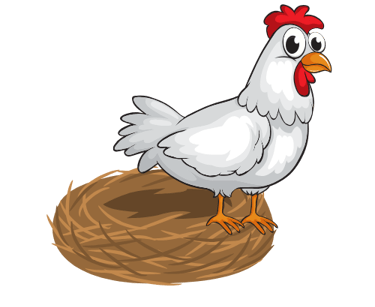Clucking Diversity: Exploring Chicken Breeds and the Charm of Pullets
This blog explains the types of chickens for which type of chicken lays more eggs and which type of chicken has more meat?
CHICKEN BREEDS
3/2/20257 min read
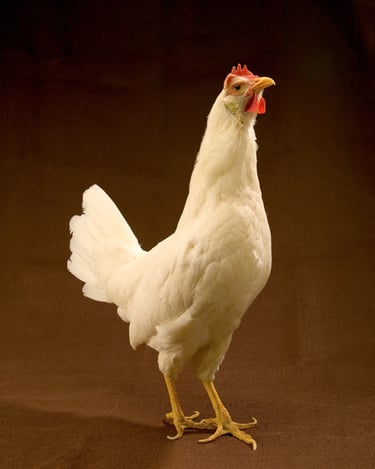

Chickens are more than just barnyard birds; they're a tapestry of colors, personalities, and purposes. Whether you're a backyard enthusiast or a curious reader, join us as we explore the fascinating world of chicken breeds and unravel the mystery of pullets.
1. Chicken Breeds: A Flock for Every Purpose
Chickens are categorized by their primary roles, each breed boasting unique traits. Here’s a peek into their varied world:
Egg-Laying Champions
Leghorn: Sleek and efficient, these white birds lay up to 300 large white eggs annually. Thrive in warm climates.
Rhode Island Red: Hardy and friendly, producing ~250 brown eggs yearly. Adaptable to most environments.
Australorp: Australian beauties holding egg-laying records (300+ eggs) with glossy black feathers.
Meat Masters
Cornish Cross: Fast-growing, reaching table weight in 6–8 weeks. Prized for tender meat.
Jersey Giant: Gentle giants, ideal for meat but also lay brown eggs. Cold-hardy and calm.
Dual-Purpose Delights
Orpington: Fluffy, docile, and perfect for both eggs (200+ yearly) and meat. Thrives in colder regions.
Plymouth Rock: Striped feathers and reliability. Lays 200+ brown eggs; calm and family-friendly.
Ornamental Wonders
Silkie: Fluffy, silk-like feathers with black skin and bones. Broody and affectionate—ideal as pets.
Polish: Topped with a feathered crest, these quirky birds lay white eggs and adore attention.
Rare Gems
Ayam Cemani: All-black, from feathers to bones. Mystical and sought-after, laying cream-colored eggs.
La Flèche: French "Devil Bird" with a V-shaped comb. Lean meat and unique appearance.
2. What Are Pullets? The Teenagers of the Flock
Pullets are young female chickens, typically under one year old, who haven’t yet started laying eggs. Here’s why they matter:
Terminology Toolkit
Pullet: Female <1 year (pre-laying).
Hen: Mature female (laying eggs).
Cockerel: Young male; becomes a rooster at maturity.
Why Pullets Matter
Backyard keepers often buy pullets to skip the chick-rearing phase. They begin laying at 16–24 weeks, depending on breed. For example, Leghorns start early, while Silkies may take longer.Care Tips
Provide balanced feed (higher protein for growth) and a safe coop. Monitor for signs of laying readiness, like comb reddening and exploratory nesting.
3. Choosing Your Flock
Consider your goals:
Eggs? Opt for Leghorns or Australorps.
Meat? Cornish Cross or Jersey Giants.
Companionship? Silkies or Orpingtons.
Climate adaptability matters too—Leghorns love heat, while Orpingtons handle cold well.
From prolific egg-layers to ornamental showstoppers, chickens offer endless variety. Understanding pullets helps you time your egg harvest and nurture your flock. Whether you seek productivity or whimsy, there’s a breed (and a feathered friend) waiting for you. Happy clucking! 🐔
White Leghorn – A prolific egg-laying breed, famous for its high output of white eggs
. These small-bodied chickens are very active and efficient, making them popular in commercial egg production. Leghorn hens can lay a very large number of eggs per year (often well over 250), demonstrating excellent feed-to-egg conversion.
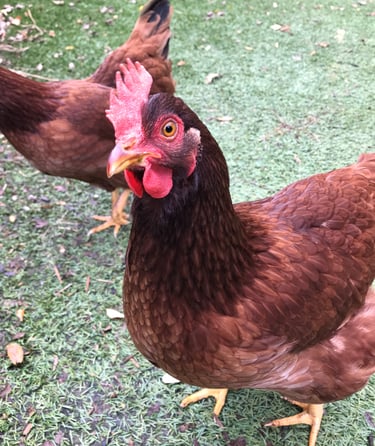

Rhode Island Red – A hardy dual-purpose breed valued for both brown egg production and meat. It is widely considered one of the best dual-purpose chickens
, with hens laying a good number of large brown eggs while roosters can be used for meat. This American breed is tough and adaptable, making it popular on homesteads for its resilience and productivity.
Cornish Cross (Broiler) – A hybrid chicken bred exclusively for meat production. These birds grow astonishingly fast, often reaching market weight of about 5–7 lbs in just 6–8 weeks
. Cornish Cross broilers have white feathers and a broad, breast-heavy build, making them the standard for commercial chicken meat due to their efficiency and quick growth.
Buff Orpington – A large, dual-purpose breed known for its gentle temperament and motherly nature. Orpingtons are one of the friendliest and most docile chicken breeds
, often kept as family-friendly backyard chickens. Hens are decent layers of light brown eggs and are renowned for going broody (readily sitting on eggs), which makes them excellent mothers for raising chicks.
White Silkie bantam chicken– A unique ornamental breed with fluffy, silk-like plumage and several unusual traits
. Silkies have dark blue (almost black) flesh and bones, turquoise-blue earlobes, and even grow an extra fifth toe on each foot. They are calm, affectionate chickens often kept as pets, and Silkie hens are famously broody, frequently used to hatch the eggs of other poultry due to their excellent mothering instincts.
White-Crested Black Polish (Poland) – An ornamental chicken distinguished by its large feathered crest. The breed’s extravagant “top hat” of feathers can partially obscure its vision
, so owners sometimes trim the crest for the bird’s safety. Polish chickens are kept mostly for show and enjoyment; they lay small white eggs but are not especially productive layers. Their quirky appearance and friendly, curious nature make them popular in exhibition and backyard flocks.
Blue Ameraucana hen (bearded) – An American breed developed in the 1970s to preserve the blue egg gene of the South American Araucana
. Ameraucana hens lay pastel blue to blue-green eggs, adding unique color to egg collections. These chickens have beards and muffs (feathered faces) and a pea comb, and they are medium-sized, hardy birds that tolerate cold well while providing steady egg production.
Light Brahma hen – A giant heritage breed once known as the “King of Poultry” for its size and meat yield. The Brahma was the principal American meat chicken from the 1850s until about 1930
, valued for its massive body and winter hardiness. Brahmas have feathered legs and gentle personalities; hens lay medium-sized brown eggs even in colder months, and the breed is often kept today for its impressive appearance and calm temperament.
Dominique hen foraging– Often cited as the oldest American chicken breed (dating back to colonial times)
backyardpoultry.iamcountryside.com
. Dominiques have a striking barred (black-and-white) plumage and a low, rose-shaped comb, traits that make them hardy in various climates. They are excellent foragers and very hardy overall
, historically roaming barnyards to control insects. Dominiques are dependable layers of brown eggs and represent self-sufficient homestead poultry, well-suited for free-range life.
Golden Sebright bantam chickens – A true bantam breed (it exists only in miniature form) created in Britain purely for ornamental show purposes. Sebrights have stunning gold or silver laced plumage, making them popular exhibition birds
. Hens lay very few tiny eggs (often only 60–80 per year)
so they are not kept for productivity. Instead, their friendly demeanor and beautiful feather pattern make them a favored ornamental breed for hobbyists and poultry shows.
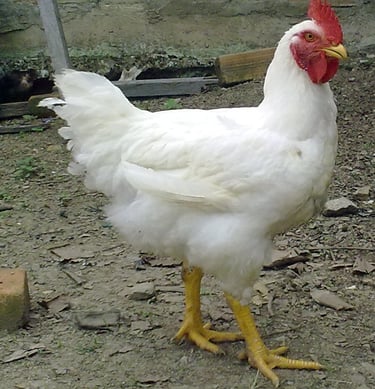

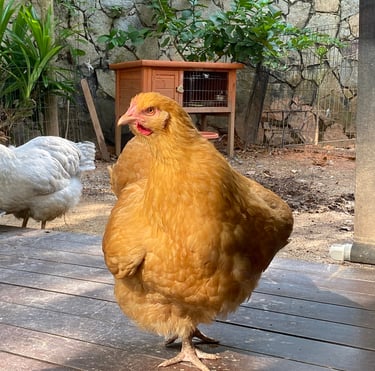

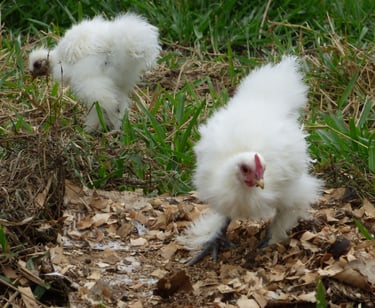

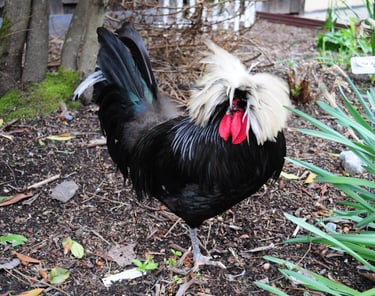

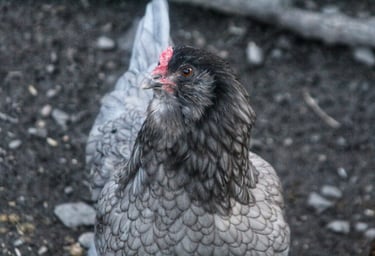

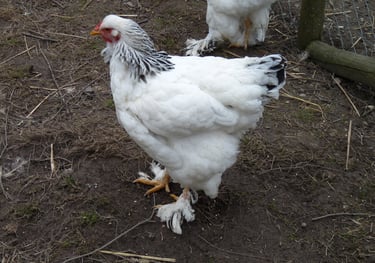

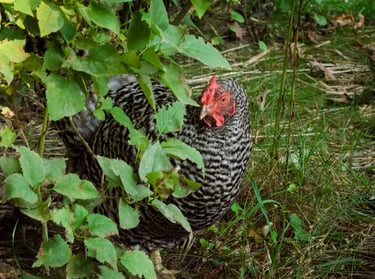

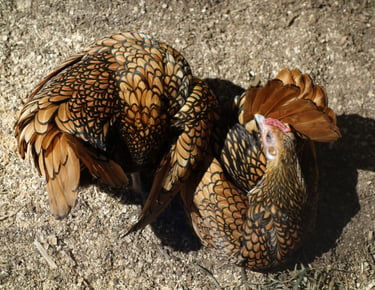



Whether you’re starting a backyard flock or adding to an existing one, knowing where to buy chickens—especially pullets or specific breeds—is key. Here’s a breakdown of the best sources and tips for success:
1. Local Feed Stores or Farm Supply Stores
Pros: Convenient, seasonal availability (spring is peak chick season), and staff often provide advice.
What to Expect:
Most sell day-old chicks (common breeds like Rhode Island Reds, Leghorns, or Plymouth Rocks).
Some may offer “started pullets” (4–6 weeks old) for a higher cost.
Tip: Call ahead to confirm availability and breeds in stock.
2. Hatcheries (Online or Local)
Online Hatcheries (Nationwide Shipping):
Reputable options:
Murray McMurray Hatchery (huge breed variety, including rare types).
Meyer Hatchery (great for beginners, sells pullets).
Cackle Hatchery (heritage and dual-purpose breeds).
Pros: Access to rare/exotic breeds (e.g., Silkies, Ayam Cemani).
Cons: Shipping stress for chicks; minimum order sizes (often 10–25 chicks).
Local Hatcheries:
Search for regional hatcheries (e.g., Ideal Poultry in Texas). These often allow pickup to avoid shipping.
3. Local Breeders or Farmers
Pros: Support small-scale breeders, inspect birds in person, and buy “started pullets” ready to lay.
Where to Find Them:
Farmers’ markets (ask around!).
Facebook groups (search “[Your State] Chicken Breeders” or “Backyard Chickens”).
Craigslist or Nextdoor (be cautious—ask for health guarantees).
4. Poultry Auctions or Livestock Sales
Pros: Unique finds, older birds, or rare breeds.
Caution: Auction birds may have unknown health histories—quarantine new arrivals.
5. Rescue Organizations or Rehoming
Pros: Adopt retired hens (e.g., ex-battery farm chickens) for a second chance.
Where: Check local animal shelters or groups like Hen Harbor or The Livestock Conservancy.
6. Online Marketplaces
eBay or Facebook Marketplace: Often used by small breeders to sell chicks, eggs, or pullets.
Specialty Sites:
My Pet Chicken (sells small orders of 3–4 chicks, ideal for backyarders).
Greenfire Farms (high-end, rare breeds).
7. Poultry Shows or Expos
Pros: Meet breeders, see birds in person, and buy quality stock.
Events: Search for state or county poultry shows (e.g., Ohio National Poultry Show).
Tips for Buying Pullets or Chicks
Know Your Goals:
Need eggs fast? Buy “started pullets” (16–24 weeks old).
Want to raise chicks? Start with day-olds (cheaper but require brooding).
Health Check:
Look for bright eyes, clean feathers, and active behavior.
Avoid sneezing, lethargic, or pasty-vented birds.
Ask Questions:
Vaccination status (e.g., Marek’s disease).
Breed authenticity (if buying rare types).
Timing Matters:
Chicks need heat lamps—plan for spring/summer arrivals.
Pullets can transition to coops in fall/winter.
Local Laws: Check ordinances for flock size limits or rooster bans.
Final Clucks
Whether you source chicks from a local farm or order exotic breeds online, prioritize reputable sellers and healthy birds. Pullets offer a shortcut to fresh eggs, while raising chicks lets you bond with your flock from day one. Happy chicken hunting—may your coop be full of clucks and curiosity! 🐣
Where to Buy Chickens: A Guide to Finding Your Flock
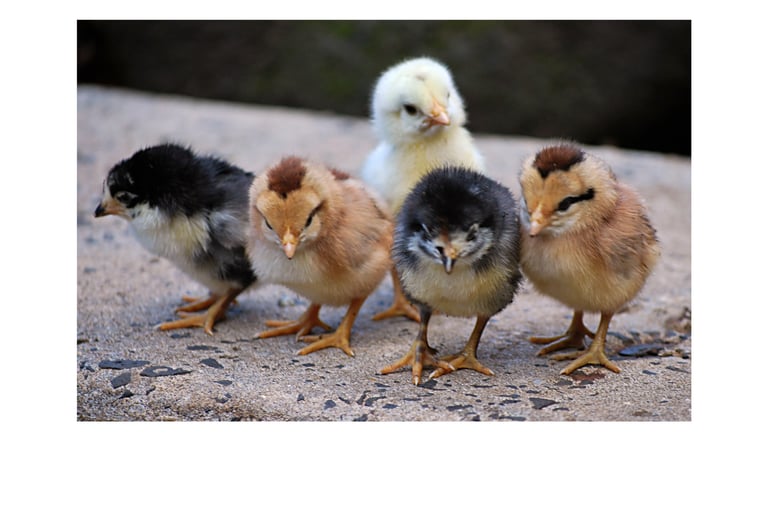

Brooder Plate for Chicks, Adjustable Height & Angle Chick Heat Plate for 30 Chicks, Chick Brooder Heating Plate with Remote Control, Chicken Coop Heater
No Eggs Today
Discover delicious no-egg recipes and substitutes.
Murray Kentucky
newproducts102@gmail.com
© 2025. All rights reserved.
